How Innovations in Robotics Are Eliminating Challenges in Manufacturing

Posted on Feb 20, 2017 in Manufacturing
3 min read time
Our world is one that’s focused on constant growth. Whether it’s growth in population, technology, or anything in between, we’re always expanding. This results in spikes of demand from the manufacturing industry, which is already hurting as more and more baby boomers retire.
There’s no shortage of challenges that these companies face, but there’s a silver lining in this cloud: robotics. The huge leaps forward that we’ve made in regards to robotic technology, are fueling the future of manufacturing and helping supplies meet demand while creating new jobs for people in the industry. Let’s take a look at how today’s robots are helping tomorrow’s manufacturing.
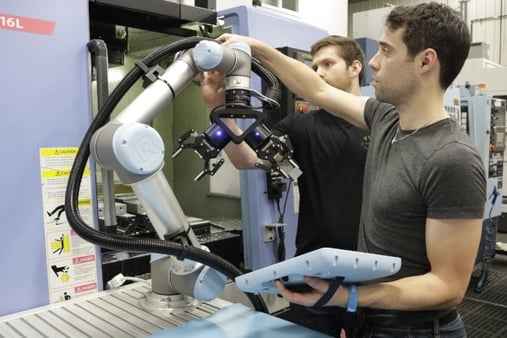
The Future of Factories: Innovations in Robotics
Manufacturers are always looking for new ways to improve their efficiency while still keeping their human workers safe and happy. It’s a precarious balance that’s made much easier through the use of collaborative robotics.
Most people are used to the traditional fenced robot, which doesn’t have a lot of safety features, and as such, is typically isolated from their human counterparts. This is no longer the case with today’s collaborative robots.
Not only are they safe and efficient options, but they don’t require complex coding or engineers to train them. Today’s robots have vision systems that allow them to sense their human counterparts and even learn from their demonstrations.
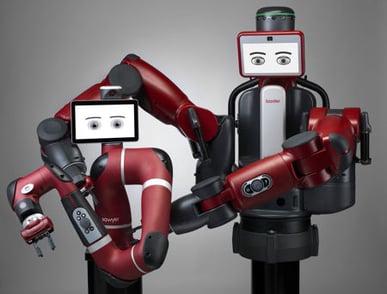 One of the most profound examples of this solution in action, is the Sawyer robot from Rethink Robotics. Sawyer is the evolution of Baxter, the company’s first robot. This new model is able to work in tight spaces and near humans without any safety concerns.
One of the most profound examples of this solution in action, is the Sawyer robot from Rethink Robotics. Sawyer is the evolution of Baxter, the company’s first robot. This new model is able to work in tight spaces and near humans without any safety concerns.
Sawyer is lightweight at only 42 pounds and has 7 degrees of freedom with a 1260 mm reach. With force sensing abilities, Sawyer can “feel” its way into machines and work with a precision of +/- .1mm. It’s truly incredible.
Sawyer is only one of many as well. Universal Robotics is also offering several models of UR robots that boast some of the most flexible and easily-programmable options in the collaborative robotics industry.
Manufacturers also face challenges when it comes to hiring people for dirty, dangerous, or repetitive work. They simply don’t want to perform such tasks, but the UR robots can do so without any issue.
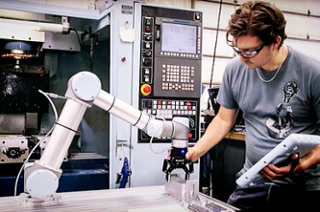 Furthermore, a whopping 80% of UR robots deployed worldwide work without any safety guarding and work right alongside their human counterparts. They are even certified by The German Technical Inspection Association as safe collaborative robots.
Furthermore, a whopping 80% of UR robots deployed worldwide work without any safety guarding and work right alongside their human counterparts. They are even certified by The German Technical Inspection Association as safe collaborative robots.
Even hazardous tasks like welding are falling to capable robots that don’t risk injury like a human would. The team at ABB Robotics has a IRB series that utilizes a Programmable Focusing Optics technology from Trumpf inc. to quickly weld on-the-fly coordination of mirrors and robot motion without the use a PC.
Using these mirrors, the robot can control how light travels and therefore cut down on time needed to weld. In fact, this single innovation has decreased the time needed to weld from 9 seconds, to 6.
Beyond manufacturing, robotics are making their way into all kinds of industries as well. Health and home care markets, along with service industries are all seeing the benefits of increased robotics technology and collaborative solutions.
Final Thoughts
There’s no shortage of challenges in the manufacturing industry, but thankfully, robotics is rising to the occasion and offering some of the most innovative solutions on the market. Through the use of advanced technology and the option for collaborative solutions, these challenges will soon be a thing of the past.
What challenges do you see robotics solving in the manufacturing industry? Let us know in the comments!


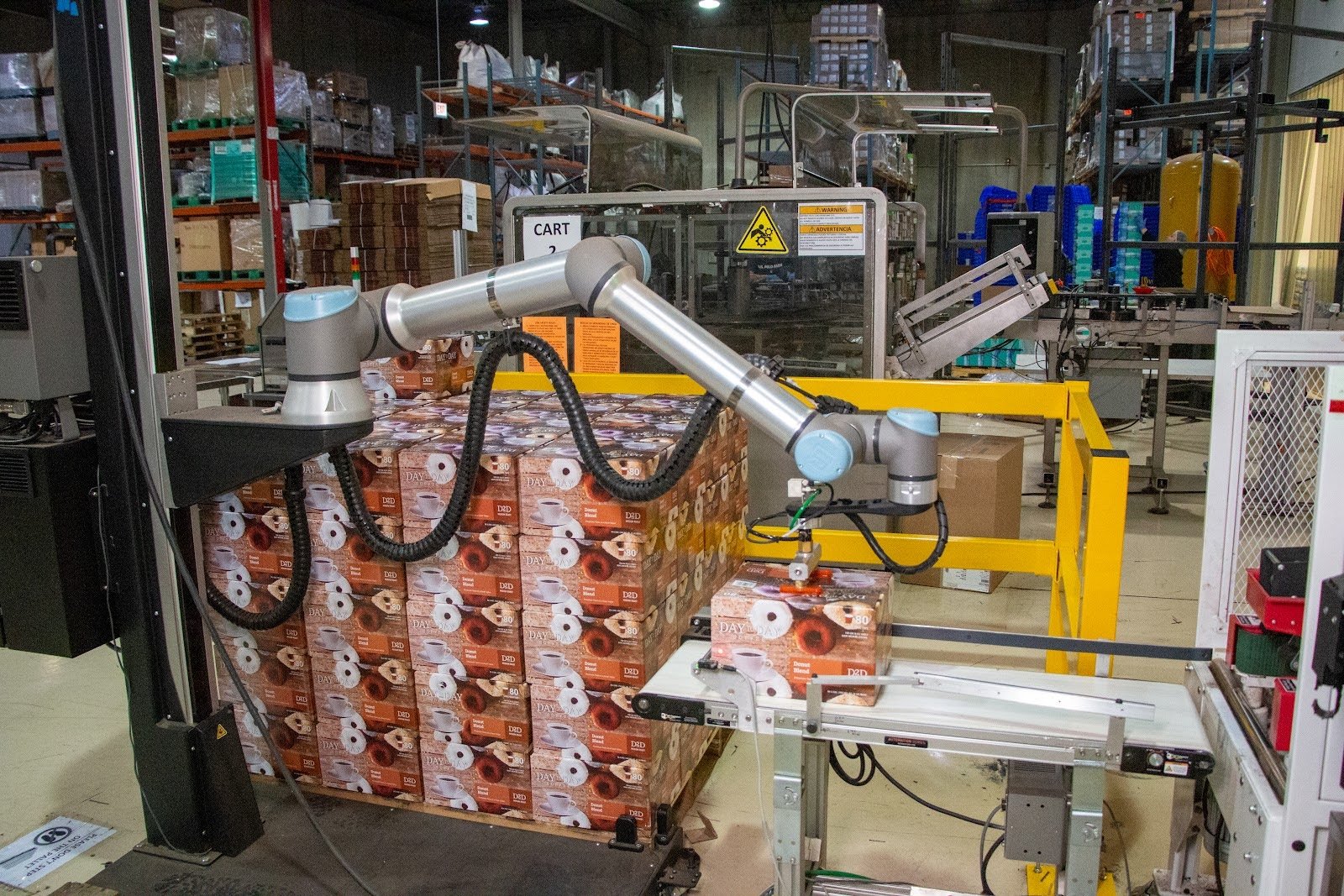

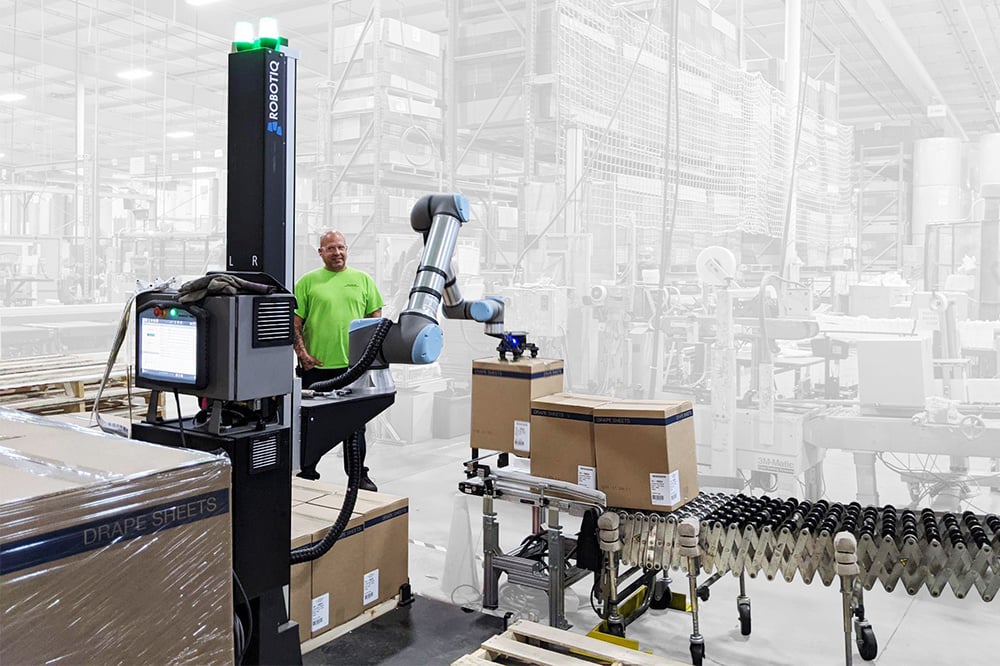
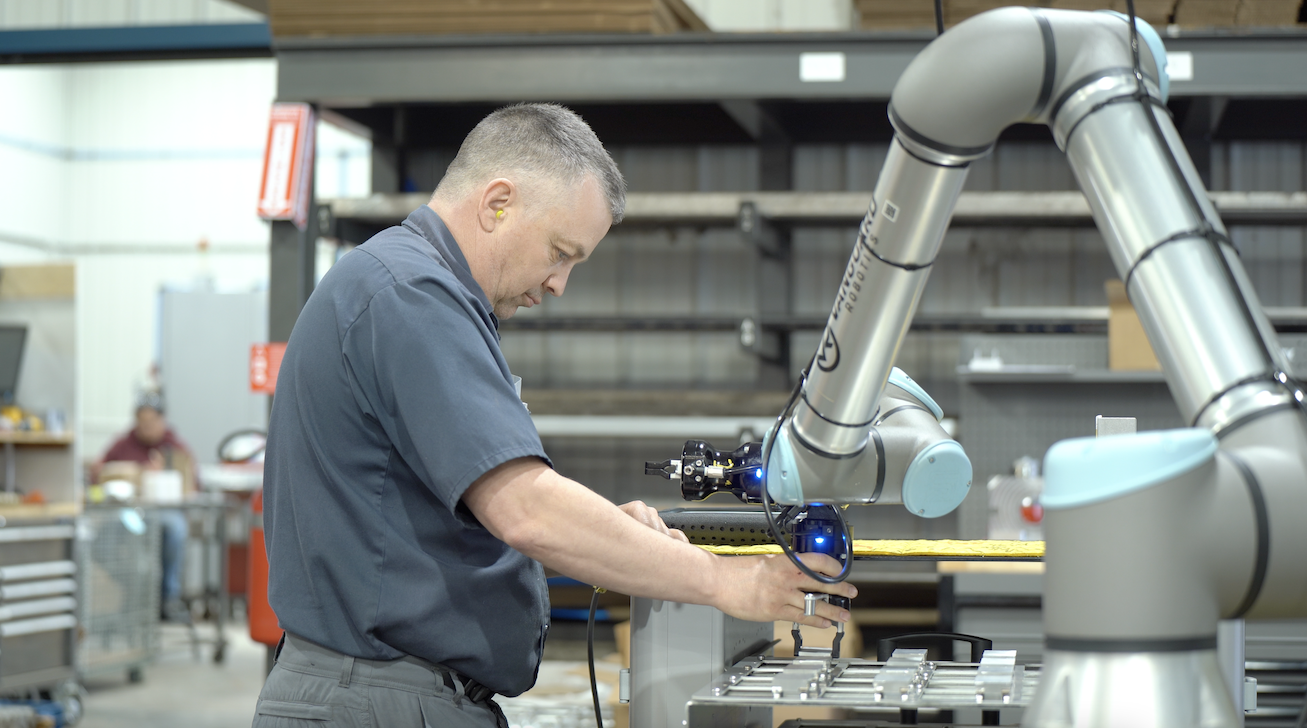

Leave a comment